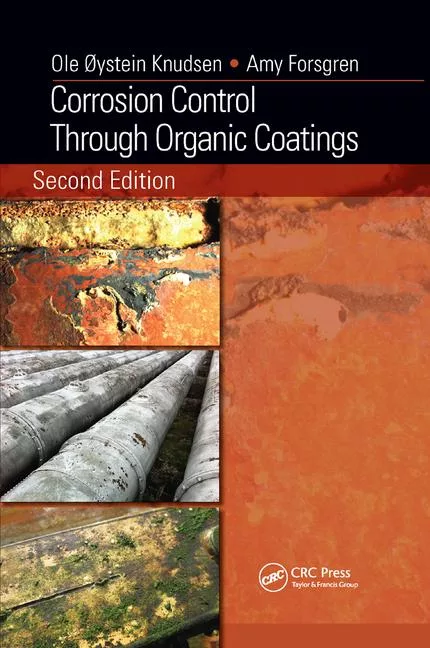Coatings Innovations
The demand for conductive coatings in electronic devices continues to grow.

 Conductive coatings have been used for many years to control and isolate electromagnetic interference (EMI) and radio frequency interference (RFI) from the internal workings of electrical devices, and to limit EMI susceptibility from external sources. The interference may block, degrade, interrupt or limit the effective performance of an electrical circuit. In addition, conductive coatings have been used to ground sensitive electronic components and protect closed electronic devices against electrostatic discharge. As electronic devices have gotten smaller, thinner and more flexible, the demand for specialty conductive coatings has grown significantly.
Conductive coatings have been used for many years to control and isolate electromagnetic interference (EMI) and radio frequency interference (RFI) from the internal workings of electrical devices, and to limit EMI susceptibility from external sources. The interference may block, degrade, interrupt or limit the effective performance of an electrical circuit. In addition, conductive coatings have been used to ground sensitive electronic components and protect closed electronic devices against electrostatic discharge. As electronic devices have gotten smaller, thinner and more flexible, the demand for specialty conductive coatings has grown significantly.
Dielectric coatings are also used in electronic devices to act as a protective layer over a conductive circuit, or as a barrier between conductive layers in multi-layered circuits, without degrading the electrical performance.
Typical polymer binders used in conductive coatings vary based on the surface to be coated, as well as the specific requirements for aging performance, flexibility, abrasion resistance, chemical resistance and exposure to temperature extremes. The polymer groups include thermoplastic resins (e.g., acrylics, polyimides, urethanes, organo-silicones and chlorinated polymers) and thermosetting resins, including epoxies and silicones.
The solvents used in these products are designed to match the viscosity and rheology of the coating to the coating process. Spraying is the most widely used method of application, but other common coating techniques include pad printing, dipping, screen printing, jet dispensing and continuous roll coating (if the surface is flexible and heat resistant enough to be passed through continuous coating machinery).
Conductive coatings are applied in a thickness of at least 0.3 mils to ensure electrical continuity. They can be applied in the 1-3 mil range, depending on the electrical shielding performance requirements.
A reliable C4ISR system is essential for the smooth coordination of military and defense systems, which have EMI/RFI requirements for many components. Examples of these applications include weapon and armament systems, GPS and radio communications, and night vision surveillance equipment and battery packs. With the aid of EMI shielding, these systems are not only more reliable-they can be made lighter and smaller.
The second catalyst for industry growth is the need to develop lower cost alternates to silver conductive coatings. In the past, silver has been the conductive metal of choice because of its low cost and high conductivity, as well as the fact that it maintains performance well on aging. However, the price of silver has jumped by 700% since 2004, and 350% since 2006. Increasing prices have driven suppliers to develop lower cost alternatives to silver conductive coatings.
Silver-plated copper has been used as a lower cost alternative to silver, but its aging properties are not as good as silver inks due to pinholes/cracks in the plating, combined with the poor conductivity of copper oxides. Carbon and graphite have also been used to replace silver, but they have a lower conductivity.
Over the past few years, new products have been developed that incorporate nanomaterials and/or non-precious metal alloys and complexes. These products can offer lower costs due to the reduction in the total amount of precious metal while maintaining a high level of conductivity and excellent aging properties.
Finally, demand is increasing for conductive coatings to adhere to low-energy plastics and fire-retardant materials used in the aerospace, military, and defense industries. This has led to the development of technically advanced conductive coatings that adhere to these difficult-to-bond surfaces. The future is bright for conductive coatings in the electronics sector. As devices get smaller, lighter and thinner and the use of wireless communications grows, the need to shield against EMI and RFI will increase the demand for these products.
The coating not only must adhere well to a variety of surfaces without intermingling with the conductive coating while processing, but must also maintain electrical insulation properties after exposure to temperature and humidity extremes, as well as high chemical resistance (depending on the application). Additional performance properties include resistance to abrasion and frictional wear and resistance, excellent resistance to oxidative degradation and weathering, and resistance to bending and creasing cycles.
Application methods for these coatings include screen printing, spraying, jet dispensing, rotogravure, reverse roll and flexography. These coatings are typically 100% solids and applied at a thickness of 0.25-1.0 mils. They are usually applied in two layers to eliminate potential pinholes from affecting performance. Typical polymers include ultraviolet light-curing acrylics, thermosetting epoxies and polyimides.
For additional information, contact Creative Materials Inc. at 12 Willow Rd., Ayer, MA 01432; phone (978) 391-4700; email info@creativematerials.com; or visit www.creativematerials.com.

Shielded ribbon cable.

Shielded military headphone and optical night vision targeting devices.
Dielectric coatings are also used in electronic devices to act as a protective layer over a conductive circuit, or as a barrier between conductive layers in multi-layered circuits, without degrading the electrical performance.
Fundamentals
Conductive coatings are a complex mixture of conductive particles and a polymer binder, as well as organic solvents and/or water. The conductive particles use conductive materials including silver, silver-plated particles, nickel, carbon, graphite and silver-tin complexes. The size and shape of the particles can vary from conventional spherical or flake materials to nanomaterials, including carbon nanotubes, silver nanotubes, and silver nanowires.Typical polymer binders used in conductive coatings vary based on the surface to be coated, as well as the specific requirements for aging performance, flexibility, abrasion resistance, chemical resistance and exposure to temperature extremes. The polymer groups include thermoplastic resins (e.g., acrylics, polyimides, urethanes, organo-silicones and chlorinated polymers) and thermosetting resins, including epoxies and silicones.
The solvents used in these products are designed to match the viscosity and rheology of the coating to the coating process. Spraying is the most widely used method of application, but other common coating techniques include pad printing, dipping, screen printing, jet dispensing and continuous roll coating (if the surface is flexible and heat resistant enough to be passed through continuous coating machinery).
Conductive coatings are applied in a thickness of at least 0.3 mils to ensure electrical continuity. They can be applied in the 1-3 mil range, depending on the electrical shielding performance requirements.
Applications
Applications for conductive coatings include the shielding and/or grounding of flexible ribbon cables for electronic devices; aerospace communications; wireless and cellular communications; medical devices; military and defense electronics; and portable computing, including laptop, notebook, and tablet computers. There is a strong need for protections against EMI/RFI for military and defense applications. Applications related to the C4ISR initiative (command, control, communications, computers, intelligence, surveillance and reconnaissance) have been growing since the terrorist attacks of 9/11.A reliable C4ISR system is essential for the smooth coordination of military and defense systems, which have EMI/RFI requirements for many components. Examples of these applications include weapon and armament systems, GPS and radio communications, and night vision surveillance equipment and battery packs. With the aid of EMI shielding, these systems are not only more reliable-they can be made lighter and smaller.
Industry Growth
Several drivers in the electronic equipment industry are leading to an increased demand for conductive coatings, as well as new product development. The first is an increased demand for conductive coatings as devices are designed to be smaller, thinner and lighter. The packing of components in a small space leads to an increased need to shield the effects of both electromagnetic and radio frequency interference.The second catalyst for industry growth is the need to develop lower cost alternates to silver conductive coatings. In the past, silver has been the conductive metal of choice because of its low cost and high conductivity, as well as the fact that it maintains performance well on aging. However, the price of silver has jumped by 700% since 2004, and 350% since 2006. Increasing prices have driven suppliers to develop lower cost alternatives to silver conductive coatings.
Silver-plated copper has been used as a lower cost alternative to silver, but its aging properties are not as good as silver inks due to pinholes/cracks in the plating, combined with the poor conductivity of copper oxides. Carbon and graphite have also been used to replace silver, but they have a lower conductivity.
Over the past few years, new products have been developed that incorporate nanomaterials and/or non-precious metal alloys and complexes. These products can offer lower costs due to the reduction in the total amount of precious metal while maintaining a high level of conductivity and excellent aging properties.
Finally, demand is increasing for conductive coatings to adhere to low-energy plastics and fire-retardant materials used in the aerospace, military, and defense industries. This has led to the development of technically advanced conductive coatings that adhere to these difficult-to-bond surfaces. The future is bright for conductive coatings in the electronics sector. As devices get smaller, lighter and thinner and the use of wireless communications grows, the need to shield against EMI and RFI will increase the demand for these products.
Dielectric Coatings
Dielectric coatings are transparent, nonconductive, insulating, void-free coatings with volume resistivity in the range of 1 x 10-16 ohm-cm. These coatings are generally used to protect a conductive layer or as a barrier layer between two or more conductive layers.The coating not only must adhere well to a variety of surfaces without intermingling with the conductive coating while processing, but must also maintain electrical insulation properties after exposure to temperature and humidity extremes, as well as high chemical resistance (depending on the application). Additional performance properties include resistance to abrasion and frictional wear and resistance, excellent resistance to oxidative degradation and weathering, and resistance to bending and creasing cycles.
Application methods for these coatings include screen printing, spraying, jet dispensing, rotogravure, reverse roll and flexography. These coatings are typically 100% solids and applied at a thickness of 0.25-1.0 mils. They are usually applied in two layers to eliminate potential pinholes from affecting performance. Typical polymers include ultraviolet light-curing acrylics, thermosetting epoxies and polyimides.
Summary
Conductive and dielectric coatings used in applications requiring EMI/RFI shielding and grounding are progressing alongside the growth of smaller and thinner devices, and with the increased use of wireless communications. Suppliers of these products have been challenged to develop new technologically advanced materials to meet the demands of these new applications.For additional information, contact Creative Materials Inc. at 12 Willow Rd., Ayer, MA 01432; phone (978) 391-4700; email info@creativematerials.com; or visit www.creativematerials.com.
Links
Looking for a reprint of this article?
From high-res PDFs to custom plaques, order your copy today!






